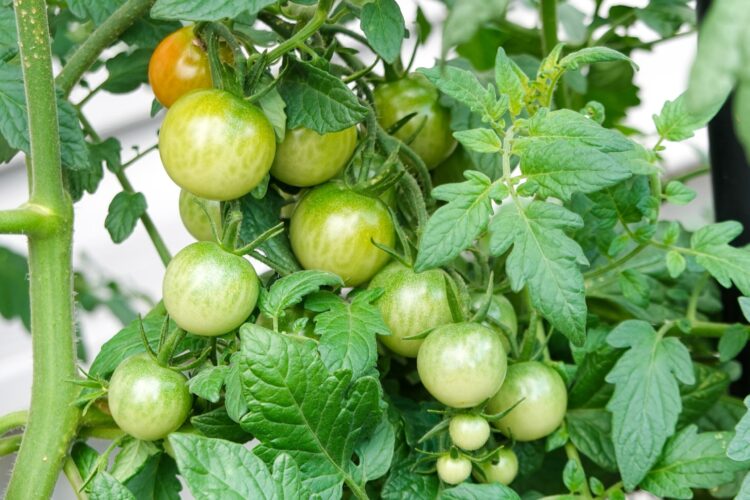Your late-summer tomato plants will be trying to overcome the effects of a wetter, cooler than normal 2021-2022 summer. However, there are some measures that smallholders can take in order to ensure that you are able to harvest some late tomatoes.
Tomato growers in many parts of the country have really struggled since November, when the heavier rains began in the summer rainfall areas.
According to SA Weather Services, “mostly below-normal maximum temperatures are expected across the country during late-summer and early-autumn, except for the north-eastern parts of the country during mid-autumn, when above-normal maximum temperatures are expected.” So even if there is not so much rain, the tomatoes that are still growing might not be given the optimum temperatures to ripen effectively. They also prefer stable temperature ranges.
Check for diseases
So growers need to be even more vigilant and must examine their plants every day. Tomatoes are susceptible to diseases brought about by bacteria and viruses and the damp conditions will have encouraged many of them.
Fungal diseases on tomatoes are early blight, powdery mildew, late blight and blossom end rot.
Viral diseases are potato virus, grey mould, tomato spotted wilt virus and tobacco mosaic virus.
Watering should be carried out carefully. Water at the bottom of the plant. This keeps the leaves dry. Water in the morning, so that the roots get what they need and evaporation means that there is not a build-up of humidity. Once the fruit has started to form, only water when the leaves look limp during the day and when the top 10cm of soil becomes dry.
Surrounding the plants with a layer of mulch prevents spores that might be in the soil from splashing up onto the plants. It also helps to keep the soil moist.
By now you should have given enough fertiliser, preferably organic fertilisers such as Vita Grow 2:3:2 or Vita Fruit & Flower 3:1:5. During the final 12 – 20 weeks, the fruit set and fill stage needs high Calcium and Magnesium.

Pull off any remaining flowers from your late-summer tomato plants, so that the plant does not need to form more fruits and can concentrate on the fruit that is already there.
Ripening artificially
If temperatures start to drop and you still have green tomatoes, there are a couple of ways that you can ripen them.
Pick some, using secateurs and leaving a short stem on each tomato. Place them in a brown paper bag and roll up the top of the bag. Keep it in a warm place and check frequently for mould. You can add a banana or an apple which will hasten the ripening. After a week they should start to ripen. Once they are ripe don’t put them in the fridge, as this will affect the flavour. You can also wrap them in newspaper and put them in a cardboard box.
It is important to find out the average date for frost in your area. If you are worried that you are approaching this cut-off date, you can try pulling out the whole plant and bringing it inside. Shake off the soil and hang it upside down in your garage or a room where the temperature will be 16 – 220. Some growers pull off the foliage as well.
For more information on growing tomatoes, check out our feature on growing vegetables in the nightshade family here.
To read more on growing crops click here.
To receive all our notices and each edition of SA Smallholder register here.

